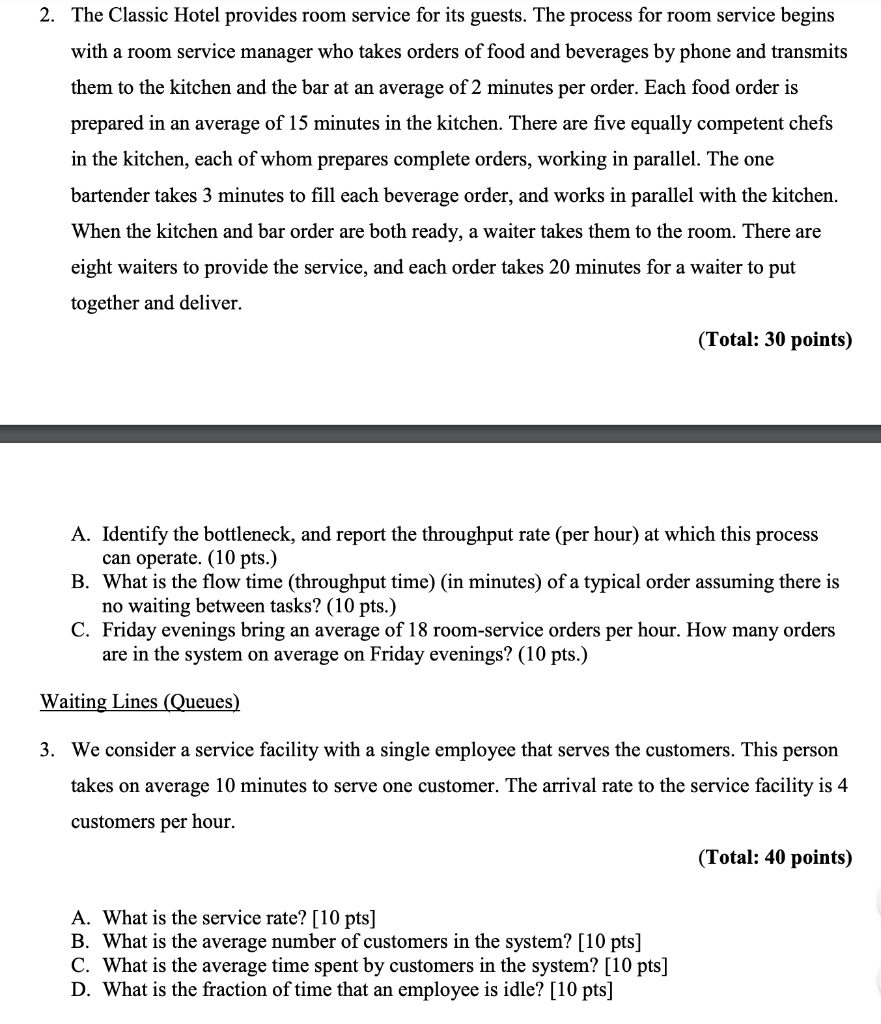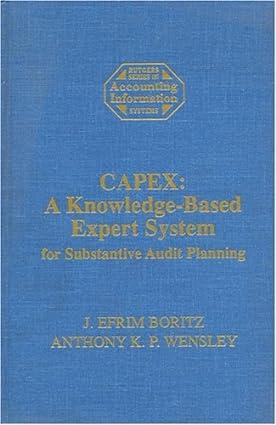
2. The Classic Hotel provides room service for its guests. The process for room service begins with a room service manager who takes orders of food and beverages by phone and transmits them to the kitchen and the bar at an average of 2 minutes per order. Each food order is prepared in an average of 15 minutes in the kitchen. There are five equally competent chefs in the kitchen, each of whom prepares complete orders, working in parallel. The one bartender takes 3 minutes to fill each beverage order, and works in parallel with the kitchen. When the kitchen and bar order are both ready, a waiter takes them to the room. There are eight waiters to provide the service, and each order takes 20 minutes for a waiter to put together and deliver. (Total: 30 points) A. Identify the bottleneck, and report the throughput rate (per hour) at which this process can operate. (10 pts.) B. What is the flow time (throughput time) (in minutes) of a typical order assuming there is no waiting between tasks? (10 pts.) C. Friday evenings bring an average of 18 room-service orders per hour. How many orders are in the system on average on Friday evenings? (10 pts.) Waiting Lines (Queues) 3. We consider a service facility with a single employee that serves the customers. This person takes on average 10 minutes to serve one customer. The arrival rate to the service facility is 4 customers per hour. (Total: 40 points) A. What is the service rate? [10 pts] B. What is the average number of customers in the system? [10 pts] C. What is the average time spent by customers in the system? [10 pts] D. What is the fraction of time that an employee is idle? [10 pts] 2. The Classic Hotel provides room service for its guests. The process for room service begins with a room service manager who takes orders of food and beverages by phone and transmits them to the kitchen and the bar at an average of 2 minutes per order. Each food order is prepared in an average of 15 minutes in the kitchen. There are five equally competent chefs in the kitchen, each of whom prepares complete orders, working in parallel. The one bartender takes 3 minutes to fill each beverage order, and works in parallel with the kitchen. When the kitchen and bar order are both ready, a waiter takes them to the room. There are eight waiters to provide the service, and each order takes 20 minutes for a waiter to put together and deliver. (Total: 30 points) A. Identify the bottleneck, and report the throughput rate (per hour) at which this process can operate. (10 pts.) B. What is the flow time (throughput time) (in minutes) of a typical order assuming there is no waiting between tasks? (10 pts.) C. Friday evenings bring an average of 18 room-service orders per hour. How many orders are in the system on average on Friday evenings? (10 pts.) Waiting Lines (Queues) 3. We consider a service facility with a single employee that serves the customers. This person takes on average 10 minutes to serve one customer. The arrival rate to the service facility is 4 customers per hour. (Total: 40 points) A. What is the service rate? [10 pts] B. What is the average number of customers in the system? [10 pts] C. What is the average time spent by customers in the system? [10 pts] D. What is the fraction of time that an employee is idle? [10 pts]







